BRITISH AIRWAYS • November 2023
Titans of Concorde: when Mike met John
As this month marks two decades since Concorde gracefully bowed out of service, The Club meets the people who knew it best. The supersonic jet’s Chief Pilot, Mike Bannister, and Chief Engineer, John Britton, reveal all exclusively to Tim Hulse
“I’ve got photographs that I took on that day, and in the background you can see a car park full of Morris Minors, Morris Oxfords, Bedford Dormobiles,” says John Britton. “And in the foreground, there’s Concorde. It seems like something from decades in the future.”
He’s talking about a spring day in 1969, when the world’s most famous supersonic passenger plane took its first flight from UK soil: a relatively short hop from Filton, the home of the British Aircraft Corporation near Bristol, to RAF Fairford in Gloucestershire. Britton was a BAC apprentice technician at the time, and would later rise up through the pay grades to become Concorde’s Chief Engineer in the UK.
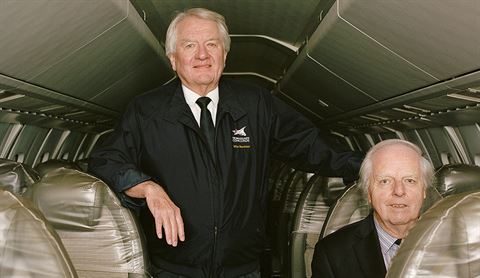
Mike Bannister and John Britton in the interior of Concorde G-BBDG
Mike Bannister also vividly remembers that maiden flight. At the time he was a 17-year-old studying for his final written exams to become a commercial pilot. He watched Concorde take off from Filton on a small black-and-white TV in his study room. “I thought to myself, ‘That’s what I want to do, I want to go fly Concorde,’” he recalls. And that’s what he did, eventually becoming Chief Pilot of our Concorde fleet, racking up more supersonic flying hours (nearly 7,000) than any other human.
“Concorde was doing things back then that still aren’t being done today,” he says. “We were flying passengers across the Atlantic, day in, day out, at twice the speed of sound for 27 years. Concorde doesn’t just look futuristic, she really is futuristic, in the sense that she’s done things that have never been repeated.”
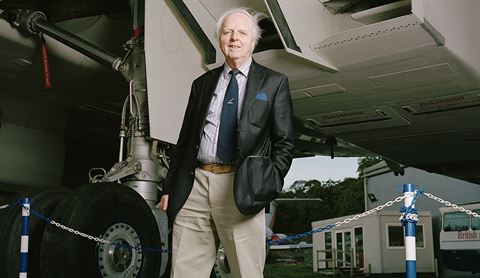
John Britton stands under Concorde at Brooklands Museum
Twenty years on from Concorde’s final flight (taking off from Heathrow and landing, fittingly, at Filton), Bannister and Britton have met up to talk about the aircraft that played such a major role in their lives. The pair seem to have arrived straight from Central Casting (Aviation Dept): Bannister the debonair former lord of the skies, and Britton the earnest and enthusiastic techie. The venue for the meeting is Brooklands Museum in Surrey. The site was once home to both a motor racing circuit and a BAC manufacturing facility producing Concorde airframes, and today it’s a motoring and aviation museum. Pride of place is taken by Concorde G-BBDG, a development aircraft initially built for testing that now offers a ‘Concorde Experience’, including a virtual flight.
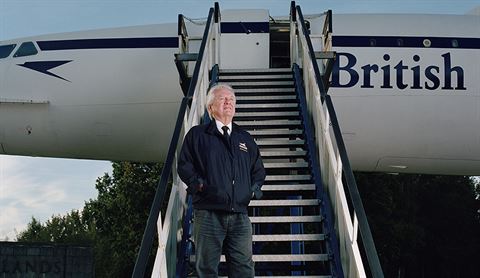
Mike Bannister prepares to board
“So many happy memories,” sighs Bannister as he settles into the pilot’s seat on the plane’s flight deck. Despite all of Concorde’s ground-breaking technology, the cabin is a very analogue kind of place: in front of Bannister, the control panel is a mass of dials. Behind him, there are yet more, for use by the plane’s flight engineer.
“There are 365 knobs, switches and selectors on the flight engineer’s panel alone,” Bannister notes, with a hint of pride. “And almost every one of them has a particular memory attached to it. It all comes back…”
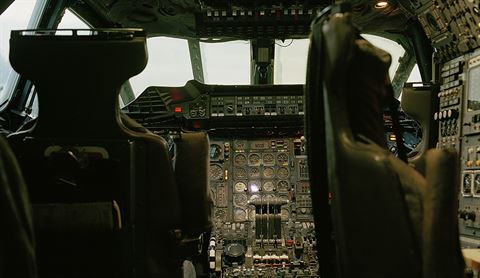
The British Airways Concorde flight simulator
Concorde flew at 60,000 feet, around twice the altitude of subsonic airliners, offering passengers and crew stunning views of the Earth below. Looking out of his “office window”, as he likes to call it, Bannister could see a quarter of a million square miles of the planet. Britton took a few flights perched on the flight deck’s jump seat and vividly recalls the sense of being on the edge of space. Approaching the coast of North America, he says, the Great Lakes lay spread out ahead “like the fingers on my hand”.
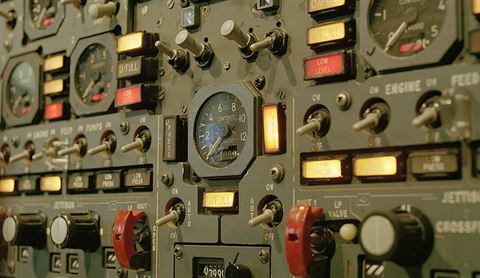
The supersonic jet’s instrument panel
Bannister spent six months learning to fly Concorde, as opposed to the two-month course required to fly a conventional new aircraft. It gave him access to a select club of pilots, crew and passengers. Around 80 per cent of Concorde’s customers were businesspeople, a large proportion of whom were regular passengers. “It was a wonderful atmosphere on board,” he says. “A lot of our customers knew each other and many of them were on first-name terms with the crew.”
There were also celebrity travellers, of course, who added to Concorde’s sense of glamour and were always keen to take a look at the flight deck. Bannister, a keen ballet fan, recalls Rudolf Nureyev popping in during a flight. He asked the great Russian dancer to name his best ever performance and he answered Hamlet at Covent Garden. “I was there,” Bannister told him. “That’s wonderful,” Nureyev replied. “You came to watch me work and now I’m doing the same.”
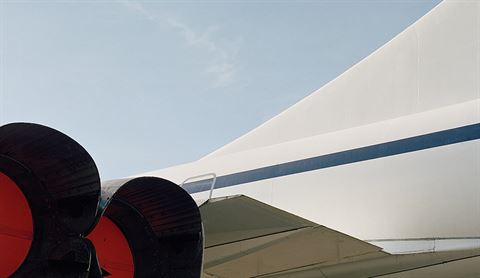
Concorde G-BBDG has four Rolls-Royce Olympus engines
While the pilot and co-pilot could take time to enjoy the spectacular views as Concorde flew on autopilot, for the plane’s flight engineer, there was plenty of work to be done with all those knobs and dials. For example, the plane stretched by as much as ten inches during flight due to heating of the airframe, shifting its centre of gravity, and fuel was automatically pumped between different tanks to maintain balance. “The engineer had to monitor that, and make sure that the fuel was always in the right place,” says Britton. They would also monitor air intake, power, pressurisation and a whole raft of other parameters as the plane flew through the air at a cruising speed of 1,354mph – fast enough to heat its famous nose cone to more than 120°C.
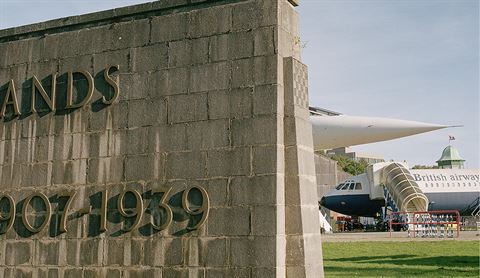
Brooklands Museum in Weybridge, Surrey
Our seven Concorde aircraft made just under 50,000 flights in total, mainly between London and New York, a flight that took on average a little less than three-and-a-half hours. In 2003, we had to make the decision to withdraw these aircraft from service due to commercial reasons. Bannister was the pilot of the final flight, from New York to London.
“After we landed, we had a reception at Heathrow in the hangar,” he says. “At the end of that, about 10.30 at night, I was literally the last person left and I was walking across the tarmac at the engineering base, where five perfectly serviceable Concordes were parked that would never carry a fare-paying passenger again. It was autumn and misty and the sodium lamps were on. That’s when the tears came...”
This article has been tagged BA, Technology
More from previous issues
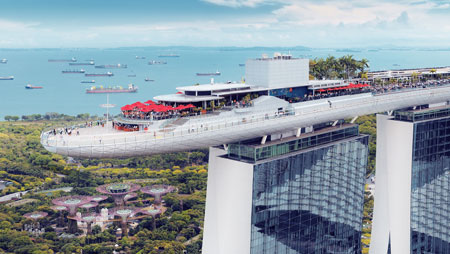
Three of the best Asian cities for mixing business and leisure
The lowdown on Shanghai, Hong Kong and Singapore for work and play
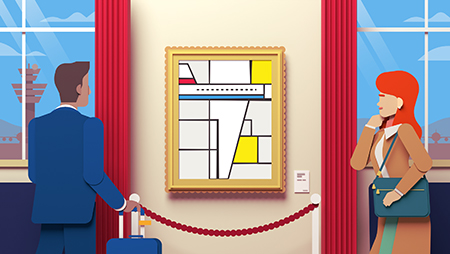
The big BA art crawl: London lounges
It’s time to elevate your lounge experience with this guide to the paintings, sculptures and installations to look out for on your next visit
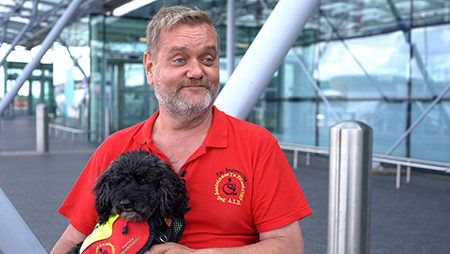
How I learned to fly again
Find out how Brian Hickman flew again this summer with a little help from us and a small dog called Lily
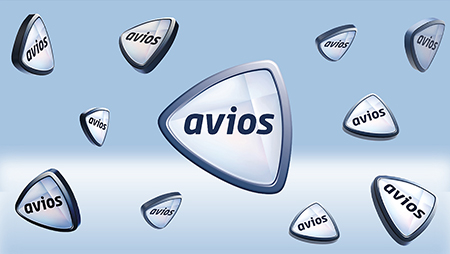
The Avios Balance Booster: explained
Find out how to turbo-charge your Avios to fast-track your next escape
